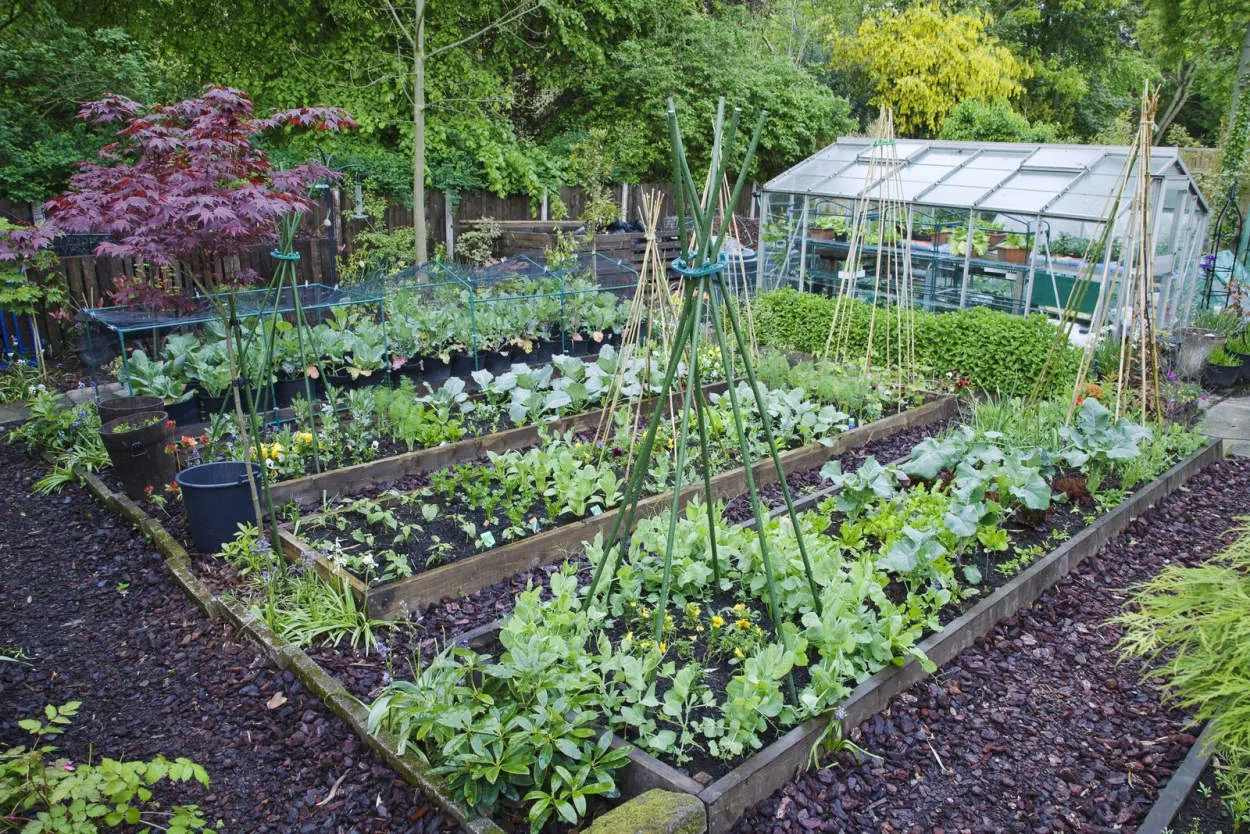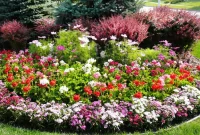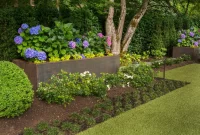Edible Gardens: Growing Your Own Fruits and Vegetables
Discover the benefits of cultivating an edible garden and enjoy fresh and organic produce right from your backyard. This article explores the joy of growing your own fruits and vegetables, discusses the environmental advantages, and provides tips for starting and maintaining your edible garden.
Planning Your Edible Garden
When it comes to growing your own fruits and vegetables, having a well-planned edible garden is essential. Whether you have a spacious backyard or just a small balcony, here are some key considerations to help you get started:
1. Assess your space
Before diving into planting, evaluate the available space for your garden. Determine whether you have enough room for raised beds, containers, or if you’ll be planting directly in the ground. Take note of the amount of sunlight the area receives to select the appropriate crops.
2. Choose the right crops
Selecting suitable fruits and vegetables for your garden is crucial. Consider the climate, seasonality, and your personal preferences. Start with easy-to-grow options like tomatoes, herbs, salad greens, or berries, which don’t require much space or expertise.
3. Plan for proper nutrition
Ensure your plants receive the necessary nutrients by preparing the soil accordingly. Incorporate organic matter or compost to improve fertility. Research the specific requirements of your chosen crops to provide them with adequate water, sunlight, and nutrients.
4. Organize your garden layout
Designing an efficient layout is essential for maximizing space and optimizing plant growth. Place taller plants where they won’t shade smaller ones. Consider companion planting to improve pollination and pest control. Remember to allow for easy access and maintenance.
5. Practice proper maintenance
Maintaining your edible garden involves regular tasks such as watering, weeding, and pruning. Stay informed about potential pests and diseases that may affect your crops. Implement organic methods whenever possible to ensure the health and safety of your harvest.
6. Harvest and enjoy!
Once your fruits and vegetables are ripe and ready, harvest them and savor the flavors of your hard work. There is nothing quite as rewarding as picking fresh produce from your own garden and incorporating it into your meals.
Remember, starting an edible garden takes time and patience. Embrace the learning process, adapt to challenges, and enjoy the journey towards growing your own delicious and nutritious food.
Best Plants for Edible Landscapes
If you are interested in growing your own fruits and vegetables, creating an edible landscape can be a fantastic and rewarding option. Not only does it provide you with a sustainable source of fresh produce, but it also adds beauty and diversity to your outdoor space. Here are some of the best plants to consider for your edible landscape:
1. Tomatoes
Tomatoes are versatile and can be grown in containers or directly in the ground. Choose from a variety of sizes and colors to add visual interest to your landscape. They are packed with nutrients and can be used in many culinary creations.
2. Herbs
Herbs like basil, rosemary, mint, and thyme are not only delicious but also easy to grow. They can be incorporated into your landscape as border plants or in containers. Fresh herbs add flavor to your dishes and attract beneficial insects.
3. Salad Greens
Salad greens such as lettuce, spinach, and arugula are perfect for edible landscapes. They grow quickly and can be harvested multiple times throughout the season. Mix different varieties to create a visually appealing and healthy salad bed.
4. Berry Bushes
Strawberries, blueberries, raspberries, and blackberries are excellent choices for edible landscapes. They provide a bountiful harvest and add color to your garden. Consider planting them along the borders or as standalone shrubs.
5. Fruit Trees
Add fruit trees such as apple, pear, or peach to your landscape for a long-term investment. Make sure to select dwarf or semi-dwarf varieties suitable for your region. Fruit trees not only provide fruits but can also serve as a focal point in your garden.
These are just a few examples of the best plants for edible landscapes. The key is to choose plants that are suitable for your climate, soil conditions, and available space. With some planning and creativity, you can transform your outdoor space into a productive and visually appealing edible garden.
Organic Gardening Practices
Organic gardening is a sustainable approach to growing plants that focuses on working in harmony with nature without the use of synthetic pesticides, fertilizers, and genetically modified organisms. By adopting organic gardening practices, you can create a healthy and productive garden while reducing your environmental impact. Here are some key practices to implement in your organic garden:
1. Soil Management
Start by enriching your soil with organic matter such as compost, leaf mulch, or well-rotted manure. This improves soil fertility, structure, and water-holding capacity, providing a favorable environment for plant growth. Regularly test your soil’s pH level and adjust if necessary.
2. Crop Rotation
Rotating your crops each growing season helps prevent the buildup of pests and diseases in the soil. Group plants into different categories based on their families and rotate them to different areas of your garden. This practice helps maintain soil health and balance nutrient requirements.
3. Companion Planting
Companion planting involves selecting plant combinations that benefit each other in terms of pest control, nutrient uptake, and pollination. For example, planting marigolds alongside tomatoes can deter certain pests, while growing beans near corn provides natural nitrogen fixation.
4. Natural Pest Control
Instead of using chemical pesticides, employ natural pest control methods. This can include introducing beneficial insects like ladybugs or lacewings, using organic insecticidal soaps, creating physical barriers, and practicing proper garden hygiene to reduce pest populations.
5. Water Conservation
Efficient water management is crucial in organic gardening. Use techniques like mulching and drip irrigation to minimize water evaporation and prevent weed growth. Collect rainwater in barrels to water your plants during dry periods, reducing the need for municipal water.
6. Responsible Weed Control
Rather than relying on herbicides, manually remove weeds using gardening tools or by hand. Regular weeding prevents weeds from competing with your crops for nutrients and sunlight. Mulching also helps to suppress weed growth.
7. Composting
Composting is a great way to recycle organic waste from your kitchen and garden. It creates nutrient-rich compost that can be added back to your soil, improving its fertility and structure. Maintain a proper balance of brown (carbon-rich) and green (nitrogen-rich) materials for effective composting.
8. Biodiversity Preservation
Encourage biodiversity in your garden by planting a variety of flowers, herbs, and native plants. This attracts beneficial insects, birds, and other wildlife that contribute to pest control and pollination. Avoid monocultures, which are more susceptible to pests and diseases.
By adopting these organic gardening practices, you can enjoy the satisfaction of growing your own fruits and vegetables while promoting a healthier environment for you and future generations.
Harvesting and Storing Your Produce
When it comes to edible gardens, growing your own fruits and vegetables can be a rewarding experience. However, knowing the right time to harvest and how to store your produce is crucial to ensure their freshness and longevity.
Harvesting
Harvesting your fruits and vegetables at the optimal time is essential for maximum flavor and nutritional value. Here are a few tips:
- Observe the color and texture: Different crops have specific signs to indicate ripeness. For instance, a vibrant color and firm texture are indicators that fruits like tomatoes, peppers, and berries are ready to be picked.
- Check the days to maturity: This information is usually available on seed packets or plant labels. It gives you a rough estimate of when your crops should be harvested.
- Perform taste tests: For some fruits and vegetables, like cucumbers or melons, taste can be the best indicator. Sample a small piece to determine if it has the desired flavor.
- Use appropriate tools: To avoid damaging your plants, use shears, pruners, or a sharp knife when harvesting. This helps ensure a clean cut and minimizes harm.
Storing
Proper storage techniques can extend the shelf life of your produce. Here are a few general guidelines:
- Remove excess dirt: Gently brush off any soil or dirt from your freshly harvested vegetables. This prevents decay and allows for better airflow.
- Separate ethylene producers: Some fruits, like apples and bananas, release a natural ripening hormone called ethylene. Keep them separate from vegetables as it can speed up the ripening process and lead to spoilage.
- Control humidity: Certain crops, such as leafy greens, prefer high humidity. For these, use perforated plastic bags or place a damp cloth over them to maintain moisture levels. On the other hand, low humidity is ideal for onions, garlic, and potatoes, so ensure good ventilation.
- Monitor temperature: Most fruits and vegetables are best stored between 32-40°F (0-4°C). However, sensitive produce like tomatoes and cucumbers may deteriorate in colder temperatures. Refrigerate or store accordingly.
By understanding the optimal time to harvest and employing proper storage techniques, you can enjoy the fruits of your labor for an extended period. Share your homegrown delights with family and friends, and revel in the satisfaction of serving fresh, flavorful produce from your very own edible garden.
Conclusion
In conclusion, edible gardens offer a great opportunity for individuals to grow their own fruits and vegetables. Not only does this promote self-sustainability and reduce reliance on store-bought produce, but it also allows people to have a greater control over the quality and freshness of their food. Whether you have a spacious backyard or just a small balcony, creating an edible garden is a rewarding and fulfilling experience that can lead to a healthier lifestyle.







